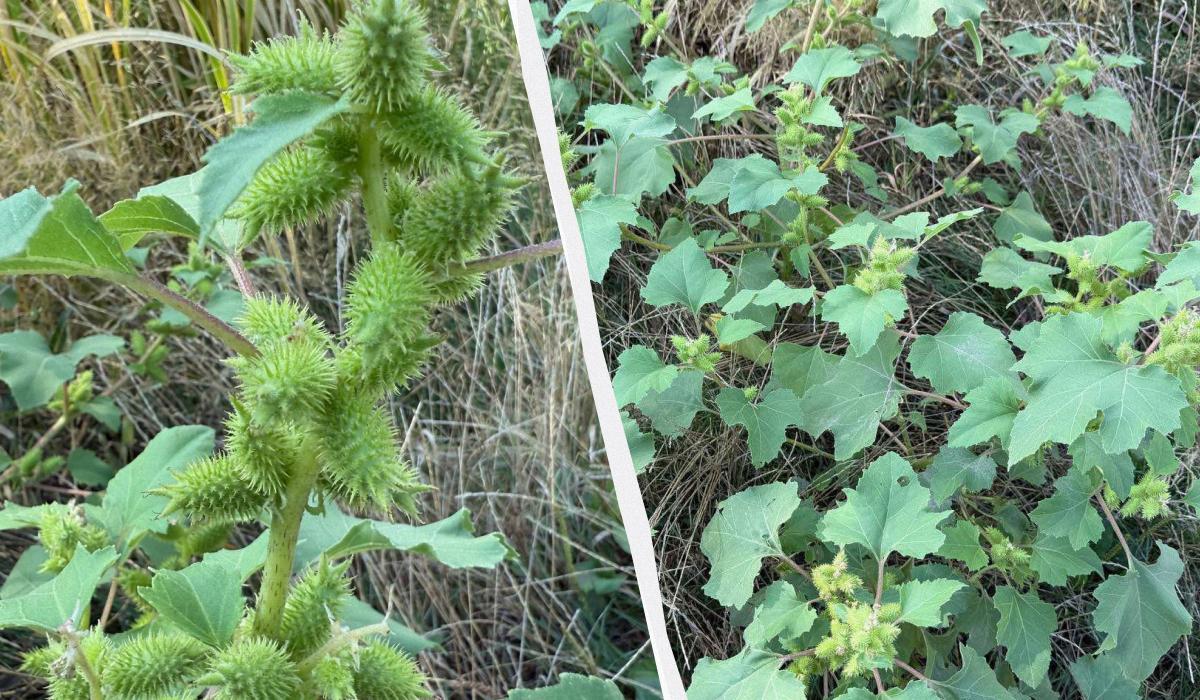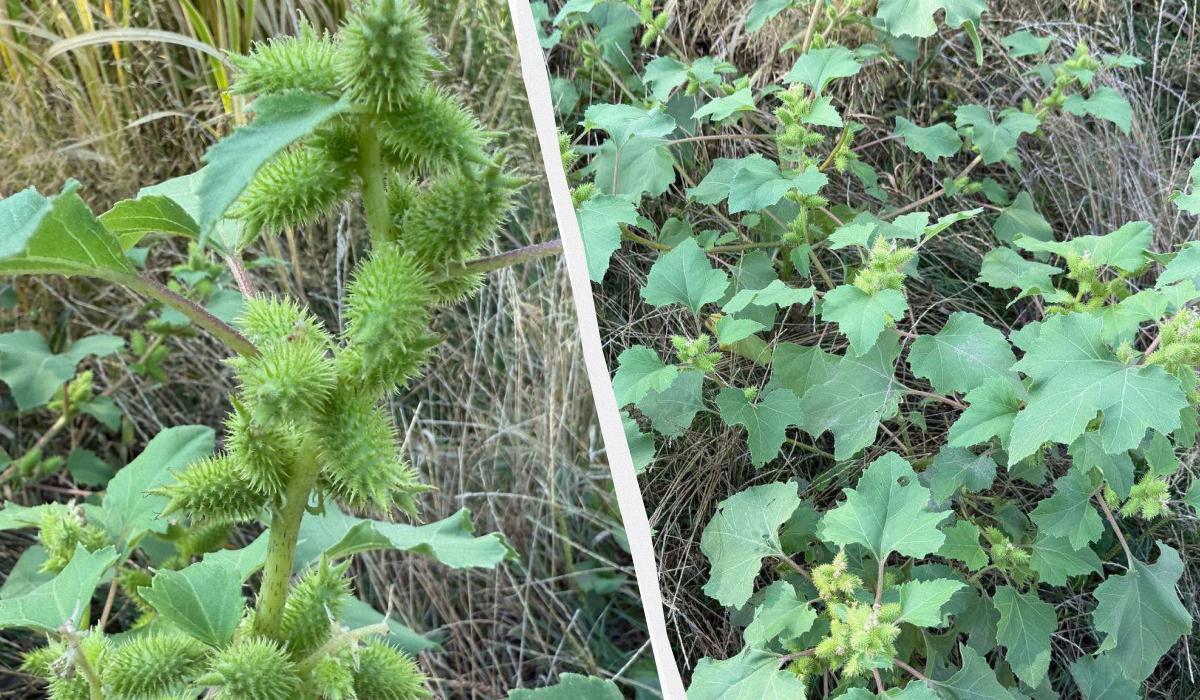“A plant called netreba grows quickly, sucks moisture from the soil, shades everything around and literally displaces local species.”, — write: www.unian.ua
A plant called netreba grows quickly, sucks moisture from the soil, shades everything around and literally displaces local species.
 Netrebu is included in the “Black List” of invasive plants of Ukraine / UNIAN collage, photo by Olena KovbasiukIn the Nizhny Dniester National Nature Park (Odesa Region), a poisonous plant was recorded – common nettle, which “kills” all other species around it.
Netrebu is included in the “Black List” of invasive plants of Ukraine / UNIAN collage, photo by Olena KovbasiukIn the Nizhny Dniester National Nature Park (Odesa Region), a poisonous plant was recorded – common nettle, which “kills” all other species around it.
According to the scientists, common nettle (Hanthium strumarium) is an annual herbaceous plant, poisonous, used for medical purposes.
“At first glance, it is an ordinary plant. But it grows rapidly, sucks water from the soil, shades everything around it and literally displaces local species. Because of this, it was unnecessarily added to the “Black List” of invasive plants of Ukraine. It is an uninvited guest in our ecosystems!” – they emphasize in the reserve.
According to Nataliya Tovstukha, an employee of the scientific department of the national park, conservationists are faced with the task of preventing the spread of this particularly dangerous invasive plant, curbing its spread and protecting the region’s natural phytodiversity.
Common junk: what is known about itCommon nettle is an annual herbaceous plant. Folk names: Netreba kolucha, scarecrow. Grows in Europe, North America, temperate regions of Asia. Spread in Africa, Australia, Oceania and South America. It grows on moist sandy soil along the banks of rivers and ditches, near fences, roads, wastelands, landfills, in cotton and other crops.
The stem is straight, hard, branched, grayish-green or reddish, short rough-hairy. Height – 30-120 cm. Leaves are heart-shaped, three- to five-lobed, unevenly toothed at the edges, with petioles, green above, light green below, up to 10 cm long. The fruits are oblong, round, prickly, tenacious achenes – burdocks up to 1-2 cm in diameter.
The chemical composition has not been sufficiently studied. The leaves contain a relatively large amount of iodine, alkaloids and ascorbic acid (about 31.8 mg%), and the seeds contain oils, resins, xanthostrumarin glycoside and iodine.
According to open sources, the plant helps to reduce the size of the thyroid gland in goiter and has an antiseptic, fungicidal, anti-inflammatory effect, is a weak pain reliever, diaphoretic and antipyretic. A decoction of these plants is taken for diarrhea and bloody diarrhea in shigellosis, asthma, throat spasms, and hemorrhoids. They are even used as an external remedy for children’s urticaria, diathesis and various skin diseases: ringworm, acne, rashes. In Chinese folk medicine, the plant is used as an antipyretic, diaphoretic, sedative for rheumatism and hypothermia. The fruits are used in the form of ointments for eczema, itchy rashes, scabies and insect bites.
At the same time, scientists warn: common nettle is a poisonous plant, so its internal use requires great care.
You may also be interested in news:
- How to cover roses for the winter so that they bloom again in the spring: step-by-step instructions
- How to get rid of purslane in the garden forever: advice from experienced gardeners
- Experts have named fruit trees that should never be planted near the house
